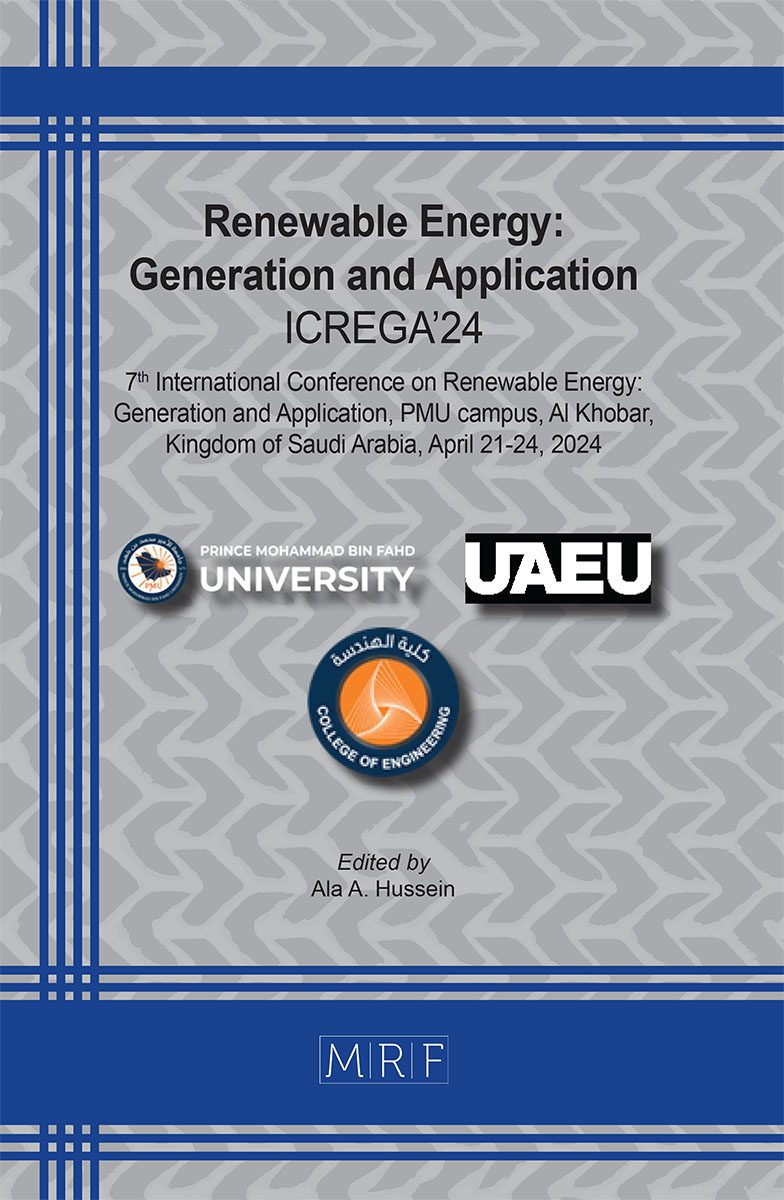–
Bidding optimization for hydrogen production from an electrolyzer
Nouf M. ALMUTAIRY, Ali T. ALAWAMI
download PDFAbstract. This paper presents a comprehensive study on the bidding optimization for hydrogen production from an electrolyzer, focusing on a single day comprising 24 hours. With the rising demand for clean energy sources, the research aims to optimize profitability and efficiency in hydrogen production. The primary objective is to maximize profit while ensuring the fulfillment of the targeted hydrogen production by the end of the day. The optimization formulation incorporates electrolyzer maintenance, electricity, and water consumption costs. The model considered two cases with different electrolyzer efficiency values to optimize power usage, allowing for a comprehensive analysis of hydrogen production optimization. Ramping limits are imposed to maintain power system stability and reliability, preventing sudden fluctuations. By solving the formulated equations and considering factors such as energy and water prices, the research findings demonstrate the effectiveness of the bidding optimization approach in optimizing resource utilization and maximizing profit. Notably, the model successfully achieves the targeted hydrogen production by the end of the day while maximizing profit. This research contributes valuable insights into the bidding optimization process for hydrogen production, highlighting the potential for economic and sustainable hydrogen generation from electrolyzers.
Keywords
Hydrogen Production, Electrolyzer, Bidding Optimization, Sustainability
Published online 7/15/2024, 9 pages
Copyright © 2024 by the author(s)
Published under license by Materials Research Forum LLC., Millersville PA, USA
Citation: Nouf M. ALMUTAIRY, Ali T. ALAWAMI, Bidding optimization for hydrogen production from an electrolyzer, Materials Research Proceedings, Vol. 43, pp 214-22, 2024
DOI: https://doi.org/10.21741/9781644903216-28
The article was published as article 28 of the book Renewable Energy: Generation and Application
![]() Content from this work may be used under the terms of the Creative Commons Attribution 3.0 license. Any further distribution of this work must maintain attribution to the author(s) and the title of the work, journal citation and DOI.
Content from this work may be used under the terms of the Creative Commons Attribution 3.0 license. Any further distribution of this work must maintain attribution to the author(s) and the title of the work, journal citation and DOI.
References
[1] IEA. (2019). The Future of Hydrogen, Report Prepared by the IEA for the G20, Japan. Seizing Today’s Opportunities.
[2] What is an electrolyzer and what is it used for? | Accelera. Available at: https://www.accelerazero.com/news/what-is an-electrolyzer-and-what-is-it-used-for (Accessed: 10 November 2023).
[3] Kim, M., & Kim, J. (2016). Optimization model for the design and analysis of an integrated renewable hydrogen supply (IRHS) system: Application to Korea’s hydrogen economy. International Journal of Hydrogen Energy, 41(38), 16613-16626. https://doi.org/10.1016/j.ijhydene.2016.07.079
[4] Nasser, M., Megahed, T. F., Ookawara, S., & Hassan, H. (2022). A review of water electrolysis–based systems for hydrogen production using hybrid/solar/wind energy systems. Environmental Science and Pollution Research, 29(58), 86994-87018. https://doi.org/10.1007/s11356-022-23323-y
[5] Wang, S., Lu, A., & Zhong, C. J. (2021). Hydrogen production from water electrolysis: role of catalysts. Nano Convergence, 8, 1-23. https://doi.org/10.1186/s40580-021-00254-x
[6] Xie, H., Zhao, Z., Liu, T., Wu, Y., Lan, C., Jiang, W., … & Shao, Z. (2022). A membrane-based seawater electrolyser for hydrogen generation. Nature, 612(7941), 673-678. https://doi.org/10.1038/s41586-022-05379-5
[7] Yuan, J., Li, Z., Yuan, B., Xiao, G., Li, T., & Wang, J. Q. (2023). Optimization of High-Temperature Electrolysis System for Hydrogen Production Considering High-Temperature Degradation. Energies, 16(6), 2616. https://doi.org/10.3390/en16062616
[8] K. Stewart et al., “Modeling and Optimization of an Alkaline Water Electrolysis for Hydrogen Production,” 2021 IEEE Green Energy and Smart Systems Conference (IGESSC), Long Beach, CA, USA, 2021, pp. 1-6. https://doi.org/10.1109/IGESSC53124.2021.9618679
[9] Morton, E. M., Deetjen, T. A., & Goodarzi, S. (2023). Optimizing hydrogen production capacity and day ahead market bidding for a wind farm in Texas. International Journal of Hydrogen Energy, 48(46), 17420-17433. https://doi.org/10.1016/j.ijhydene.2022.12.354
[10] Zhang, W., Shen, Y., Wang, X., Li, M., Ren, W., Xu, X., & Zhang, Y. Research on multi-market strategies for virtual power plants with hydrogen energy storage. Frontiers in Energy Research, 11, 1260251. https://doi.org/10.3389/fenrg.2023.1260251
[11]Economics SGH2 Energy. Available at : https://www.sgh2energy.com/economics (Accessed: 05 December).
[12]Market data | Nord Pool. Available at: https://www.nordpoolgroup.com/en/Market-data1/Dayahead/Area-Prices/de-lu/hourly/?view=table (Accessed: 05 December 2023).
[13] Salas, E.B. (2023) Europe: Tap water prices in select cities , Statista. Available at: https://www.statista.com/statistics/1232847/tap-water-prices-in-selected-european-cities/ (Accessed: 5 December 2023).
[14] KURRER, C. M. (2020). The potential of hydrogen for decarbonising steel production.
[15] Saulnier, R., Minnich, K., & Sturgess, P. K. (2020). Water for the hydrogen economy












